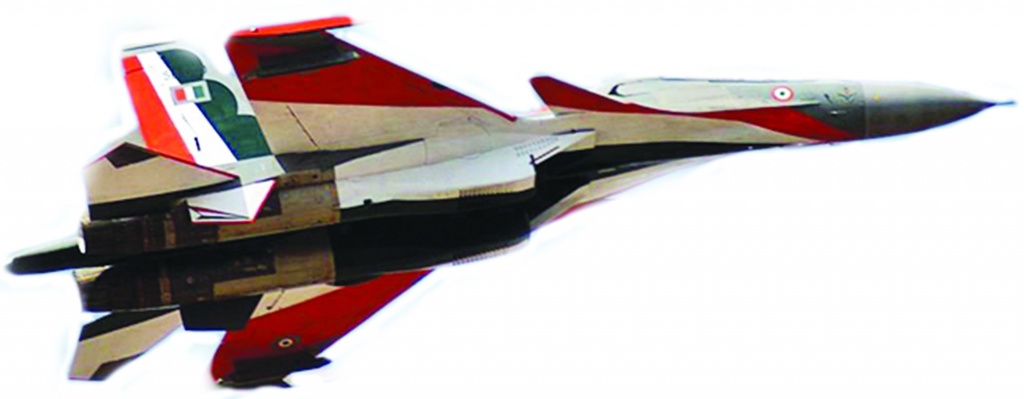 The Defence Procurement Procedure (DPP) was released on March 28, 2016, after revision by the Ministry of Defence (MoD). The DPP remains a work-in-progress as Defence Minister Manohar Parrikar said that a review will be undertaken after six months as part of the comprehensive DPP-2016. The DPP has evolved to DPP-2013 through an iterative process since the first DPP in 2002. It encapsulates the experience gained in implementing the procurement process over the years, feedback from the stakeholders associated with user services, quality control and maintenance agencies, defence finance, administrative wing and industry. Amendments are carried out continuously keeping in view the requirements of all stakeholders.
The Defence Procurement Procedure (DPP) was released on March 28, 2016, after revision by the Ministry of Defence (MoD). The DPP remains a work-in-progress as Defence Minister Manohar Parrikar said that a review will be undertaken after six months as part of the comprehensive DPP-2016. The DPP has evolved to DPP-2013 through an iterative process since the first DPP in 2002. It encapsulates the experience gained in implementing the procurement process over the years, feedback from the stakeholders associated with user services, quality control and maintenance agencies, defence finance, administrative wing and industry. Amendments are carried out continuously keeping in view the requirements of all stakeholders.
The DPP has been revised in 2005, 2006, 2008, 2009, 2011 and 2013, thus enhancing the scope to include ‘Make,’ ‘Buy and Make (Indian)’ categories, concept of ‘Offsets’, and ship building procedure.
Key Provisions of DPP 2016
‘Buy (Indian-IDDM)’and ‘Make’ Procurement Category
DPP-2016 refines ‘Make’ procedure to ensure increased participation of the Indian industry, especially MSMEs in the defence sector. The acquisition schemes are broadly classified as, ‘Buy’, ‘Buy and Make’, and ‘Make’. ‘Buy’ is further categorised as ‘Buy (Indian indigenously designed, developed and manufactured— IDDM)’, ‘Buy (Indian)’, and ‘Buy (Global)’. ‘Buy and Make’ is initial procurement of equipment in Fully Formed (FF) state followed by indigenous production through Transfer of Technology (ToT). Buy Indian or IDDM must have at least 40% indigenous content, while earlier it was 30%. ‘Make’ portion of the contract has to be minimum 50%. The Ministry of Defence will spell out a 15-year Long Term Integrated Perspective Plan (LTIPP), the five-year Services Capital Acquisition Plan (SCAP) and the Annual Acquisition Plan (AAP) for clarity.
DPP 2016 has divided the ‘Make’ projects into two categories – Make-I (Government Funded) and Make-II (Industry Funded) – besides giving a decisive say to the micro, small and medium enterprises (MSMEs), which had long craved government attention for their role in defence indigenization efforts.
Preferring the Request For Information (RFI) process
The DPP 2016 is focusing on institutionalizing the RFI process, which wasn’t given that much preference in earlier DPPs. Institute for Defence Studies and Analyses, New Delhi, noted that although the new measure has increased the number of procurement steps involved in ‘Buy’ and ‘Buy and Make’ schemes, it has nonetheless brought about clarity in the vital step of procurement, which has a far reaching implication on the source of procurement, indigenisation, the degree of competition, and more importantly, the timeliness of procurement. Besides articulating the objectives and format of the RFI process, it also stipulates the specific inputs that the procurement authorities would seek through the institutionalised step.
Introduction of L1-T1 methodology
For the first time L1-T1 methodology has been introduced in the new DPP 2016. This has been done for selecting the supplier of military goods under the ‘Buy’ and ‘Buy and Make’ schemes. The L1 bidder would no longer win a defence contract automatically, if another bidder offers an obviously technologically superior product at a marginally higher cost. However the enhancement in price cannot exceed 10% of the cost.
‘Single OEM, Multiple Bids’ and ‘Multiple Bids by Single Indian Vendor’
The DPP 2016 has made provisions for ‘single OEM, multiple bids’ and ‘multiple bids by single Indian vendor’ – in which although the bids are single-vendor in nature they would not be retracted because of lack of competition.
Sanction of AoN
The validity of Acceptance of Necessity (AoN) has been bought down from one year to six months. From now on the defence services will have to submit Request For Proposal (RFP) draft along with its AoN proposal for approval.
Essential parameters A and B
In order to increase vendor participation DPP 2016 has been divided into essential parameters A and B. ‘Essential Parameters A’ would evaluate only the automotive performance of vehicles. Only selected vehicles would be tested for ‘Essential Parameters B’. The vendors will make changes to existing product specifications, only on receipt of assured orders.
Rise in offset threshold limit
DPP 2016 has risen the price of defence equipments by about 20%. The offset threshold limit has been raised to `2,000 crore (approximately $305 million) from `300 crore.
Add new comment